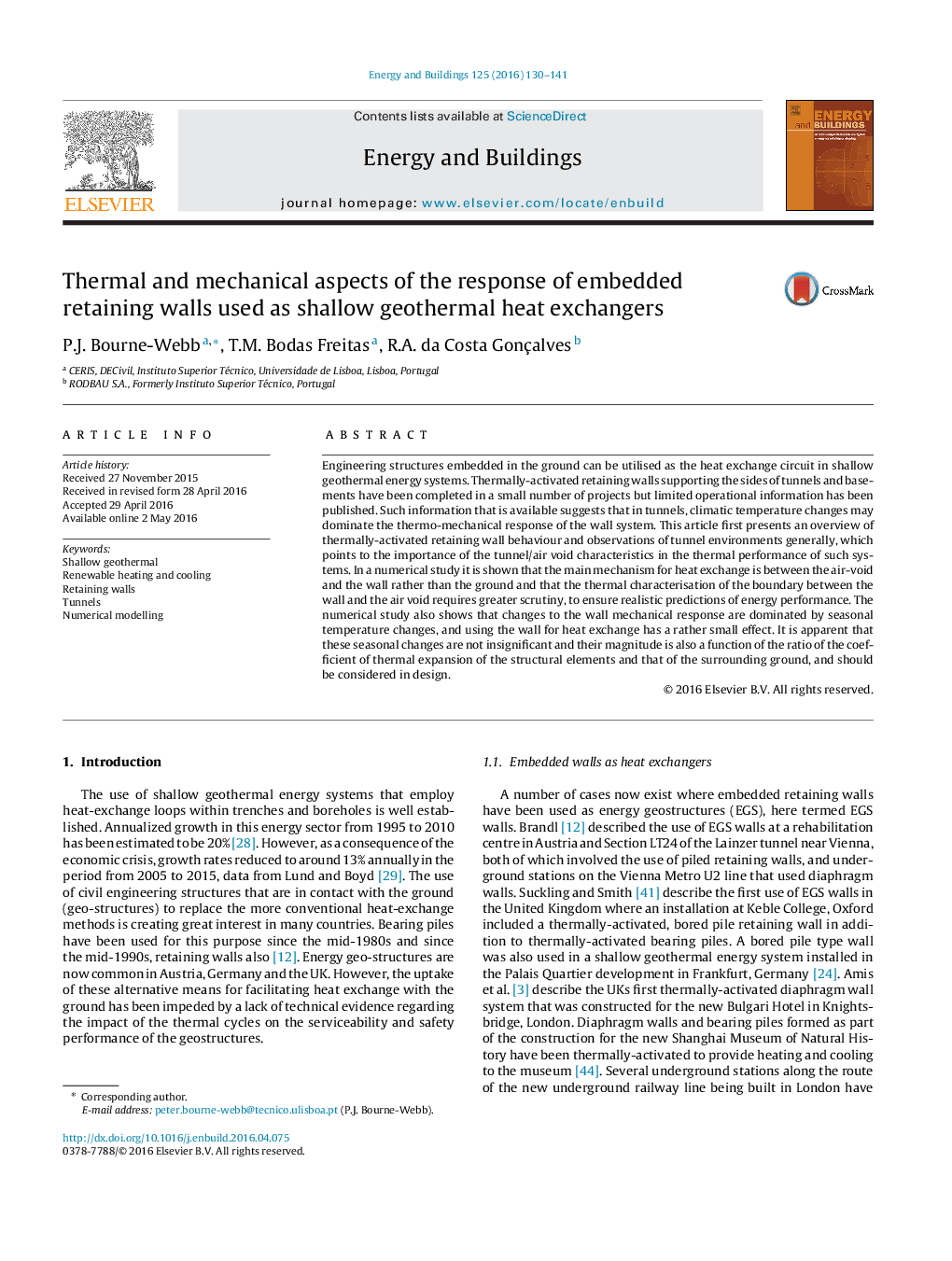| Article ID | Journal | Published Year | Pages | File Type |
|---|---|---|---|---|
| 6729928 | Energy and Buildings | 2016 | 12 Pages |
Abstract
Engineering structures embedded in the ground can be utilised as the heat exchange circuit in shallow geothermal energy systems. Thermally-activated retaining walls supporting the sides of tunnels and basements have been completed in a small number of projects but limited operational information has been published. Such information that is available suggests that in tunnels, climatic temperature changes may dominate the thermo-mechanical response of the wall system. This article first presents an overview of thermally-activated retaining wall behaviour and observations of tunnel environments generally, which points to the importance of the tunnel/air void characteristics in the thermal performance of such systems. In a numerical study it is shown that the main mechanism for heat exchange is between the air-void and the wall rather than the ground and that the thermal characterisation of the boundary between the wall and the air void requires greater scrutiny, to ensure realistic predictions of energy performance. The numerical study also shows that changes to the wall mechanical response are dominated by seasonal temperature changes, and using the wall for heat exchange has a rather small effect. It is apparent that these seasonal changes are not insignificant and their magnitude is also a function of the ratio of the coefficient of thermal expansion of the structural elements and that of the surrounding ground, and should be considered in design.
Related Topics
Physical Sciences and Engineering
Energy
Renewable Energy, Sustainability and the Environment
Authors
P.J. Bourne-Webb, T.M. Bodas Freitas, R.A. da Costa Gonçalves,
